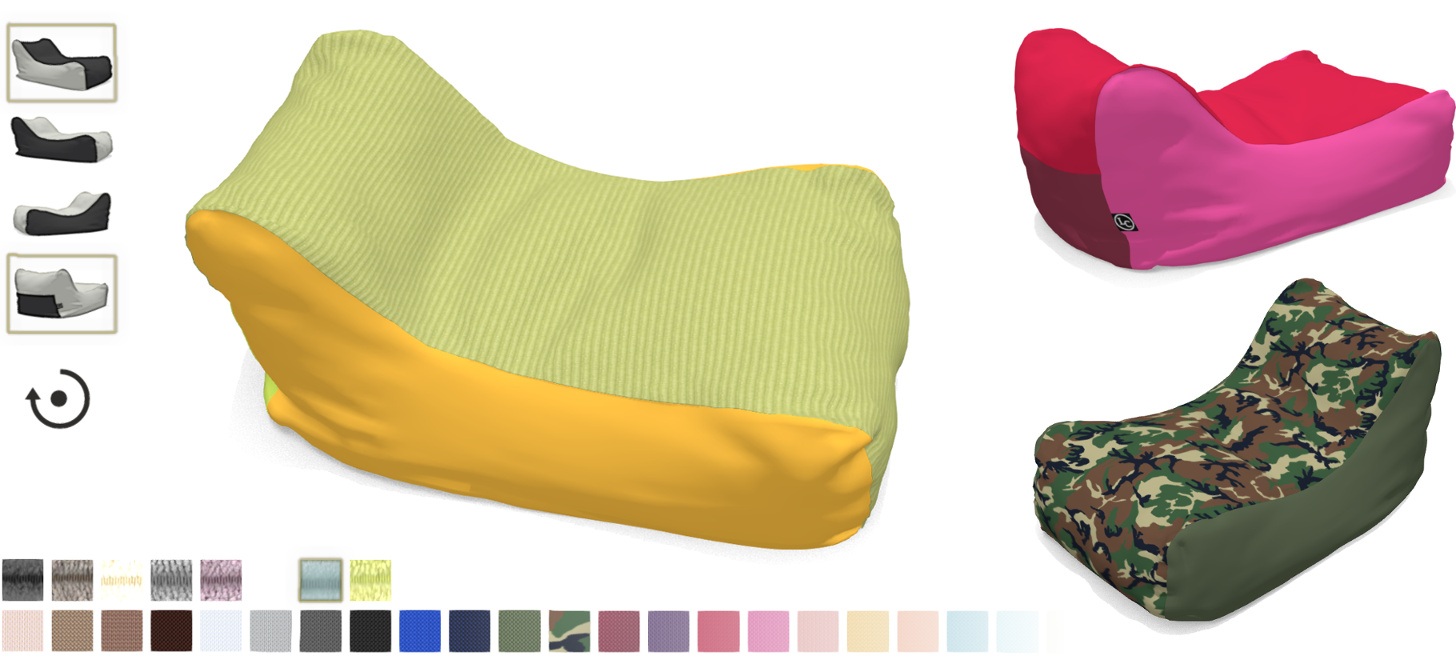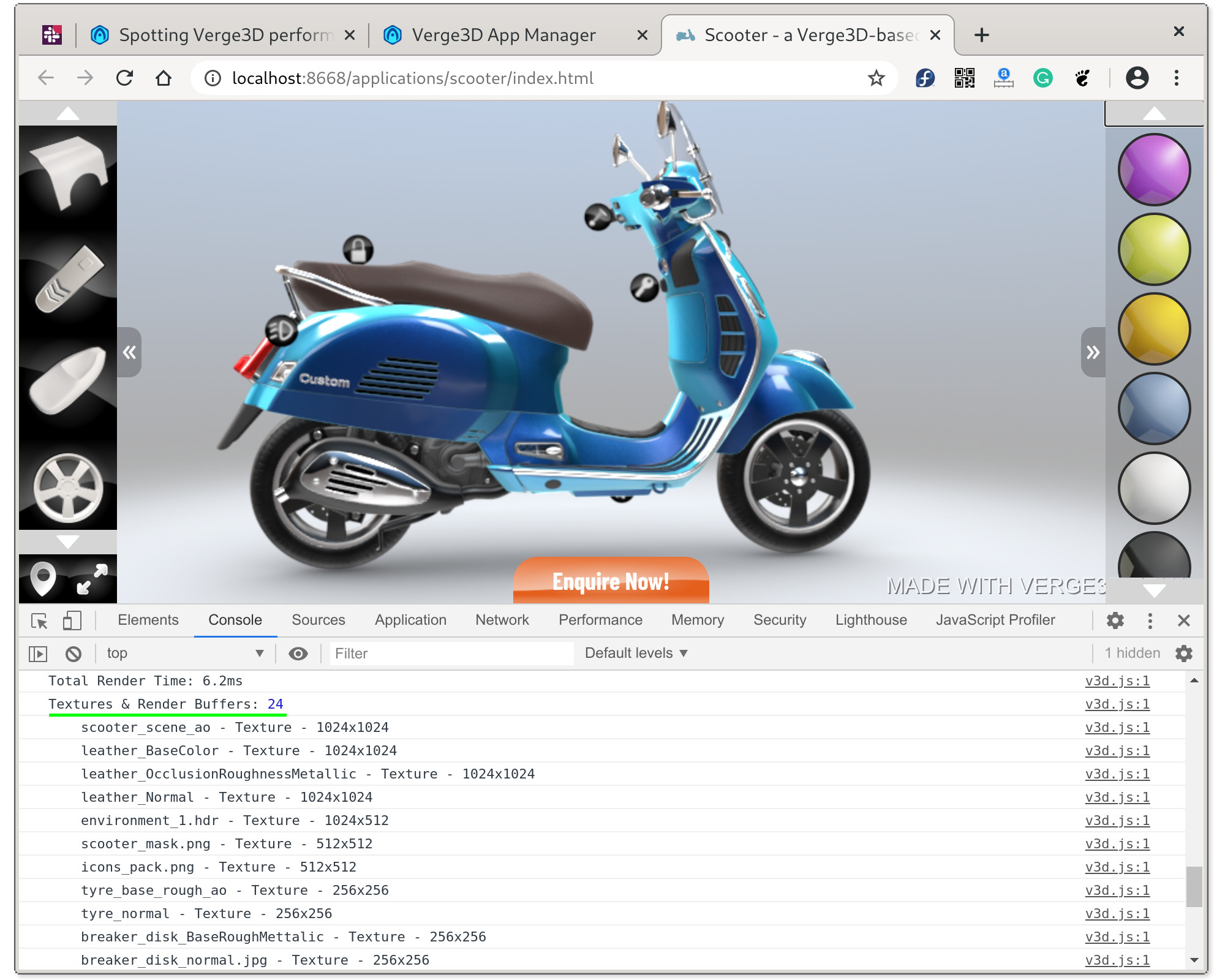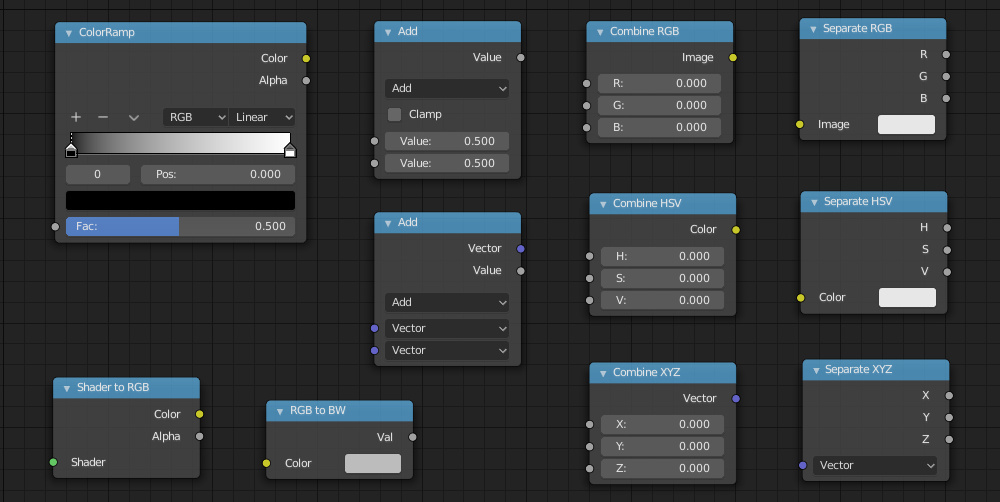Originally posted on 5 March 2020. Scroll down for news of the 3.5 update.
Soft8Soft has released Verge3D 3.0, the next major version of its toolkit for converting 3ds Max, Blender or Maya scenes into browser-based 3D web applications
The update overhauls the software’s user interface and workflow, adds a new dark UI theme, and introduces support for Oculus Quest headsets and dual-controller VR hardware.
Convert 3ds Max, Blender and Maya scenes into interactive browser applications
Founded by Blend4Web creator Yuri Kovelenov and his brother Alexander after a split from their former business partners, Soft8Soft now develops its own WebGL authoring framework.
To some extent, Verge3D supports almost all nodes provided by Blender's Shader Editor. However, for most tasks of web-based real-time graphics it is sufficient to use just a limited set of them. Below we only list the nodes that are used in stock Verge3D demos. Verge3D is not like these toolkits. It contains familiar tools only. That is why, you will not face any problem while working with it. The features of all these tools can be exported to the web interface. After creating necessary elements, you can easily export them as gITF, OBJ, FBX, and other formats. Verge3D is a non-coder friendly solution. Soft8Soft Verge3D, Moscow, Russia. 10,456 likes 24 talking about this. Soft8Soft is a startup company that provides innovative 3D web solutions and services. Developer of the most artist-friendly. Find out how industrial robots operate and used for modern manufacturing. It is capable of assembly, welding, drilling and packaging things.
Aimed at e-commerce and online marketing as well as games, the framework converts Blender, 3ds Max and, most recently, Maya scenes into interactive content that can be viewed in a browser.
It integrates directly with the host application, enabling users to create 3D geometry, materials and animations normally inside the software, then export them in the JSON-based glTF format.
Interactive functionality can be added via JavaScript, either by writing code directly or by using Puzzles, Verge3D’s visual programming environment.
Being based on WebGL, the resulting interactive application should display natively in most web browsers, without the need for plugins.
It is also possible to author augmented or virtual reality experiences, although as the implementation is based on the new WebXR API, browser support for them is currently more limited.
New in Verge3D 3.0: more streamlined user interface, and new optional dark theme
The 3.0 update streamlines workflow in two of Verge3D’s key work environments, the Puzzles editor and the App Manager, overhauling the layout of the user interface in both.
In the case of the Puzzles editor (shown above), the update is intended to increase usable screen space, with the workspace now always displayed fullscreen, with the 3D render preview in a floating window.
In the case of the App Manager, less frequently used options have been moved to a vertical toolbar, and new buttons added for deleting an app or opening its project folder from its entry in the list.
Verge3d Ajax
For speed, most operations now generate pop-up dialogs rather than redirecting to new interface pages.
The network file directory is now displayed in a clearer, tree-based view; and search and filtering capabilities have been improved throughout the software.
The update also introduces a new dark UI theme, both for Verge3D itself, and for the apps it generates.
Improved support for VR hardware and better glTF export
Verge3D 3.0 also adds support for Oculus Quest, Oculus’s wireless virtual reality headset, and makes it possible to use both controllers, rather than just one, with similar VR hardware.
There are also a number of other changes to the UI, Puzzles system, and glTF export backend, the latter resulting in “proper” handling of multiple UVs and ambient occlusion.
Blender users get support for the new options added to the Math shader node in Blender 2.82, plus support for the Clear Coat Normal input of the Principled BSDF node.
Verge 3d Render
Updated 29 April 2020: Soft8Soft has released Verge3D 3.1.
The release introduces two new light-probe-based methods for image-based lighting, which should enable users to balance scene performance against visual quality of the output.
Soft8Soft has also ported Verge3D’s physics engine to the WebAssembly open standard, which it describes as resulting in “huge performance and memory footprint gains”.
Blender-specific features include support for the Translucent BSDF node.

Updated 23 June 2020: Soft8Soft has released Verge3D 3.2.
The release introduces new modes for rendering shadows, making it possible to trade visual quality of the results against interactive performance. Six shadow modes are now available.
In addition, the built-in performance profiling system now reports more information about a scene, including lighting and post-processing, and the automatic backup system for projects has been updated.

Blender users get support for Blender’s new Vertex Color, Tangent and Vector Rotate material nodes, and for normal maps when working with glTF-compliant mateials.
The biggest change is to the Maya edition, which now supports node-based materials. Initially, 19 nodes are supported, including both key native Maya nodes and Arnold material nodes like aiStandardSurface.
Updated 30 July 2020: Soft8Soft has released Verge3D 3.3.
The update optimises shader compilation to increase the speed at which scenes created with Verge3D load: according to Soft8Soft’s blog post, its own demo scenes load 1.3 to 2.8x faster.
Other changes include new options for tweening orbital camera paths, support for the HTML canvas as a texture within materials, and the option to export in glTF format directly from within Puzzles.
In addition, the 3ds Max edition gets initial support for the new OSL (Open Shading Language) maps introduced in 3ds Max 2019. You can find a list of the maps supported in version 3.3 in this blog post.
The Maya edition gets support for more shader nodes, including colorComposite and floatComposite.
Updated 22 December 2020: Soft8Soft has released Verge3D 3.5.
New features include support for soft-body physics, with presets for ropes, cloth and volumes – described in the release notes as being for “various cushiony things”.
Rigid body simulations now support constraints, including hinges, springs and swing constraints.
It is also now possible to author plugins for Verge3D via the Puzzles scripting system.
There are also a lot of other updates to Puzzles, and to CSS and JavaScript support: you can find a full list of changes via the link at the foot of the story.

The previous update, Verge3D 3.4, added the option to author custom shaders using Open Scripting Language (OSL) and a new scrolling transition effect.
Pricing and availability
Verge3D 3.5 is available for 3ds Max 2018+, Blender 2.80+ and Maya 2017+.
The software can be trialled for free: for production, a personal licence costs $290, a team licence costs $990, and an enterprise licence – which gets you source code access – costs $2,990.

Related posts:
Tags: 3ds max, AR, Arnold, Augmented Reality, author plugin, automatic backup, autosave, Blender, browser based, cloth, convert 3D scene into interactive web app, CSS, cushions, custom shader, glTF, IBL, image based lighting, JavaScript, light probe, Maya, new features, node-based material, Oculus Quest, Open Shading Language, OSL, OSL Map, performance profiling, physics, physics constraint, price, Puzzles, rigid body constraint, ropes, scroll transition, shadow modes, soft body physics, Soft8Soft, system requirements, Translucent BSDF, Verge3D, Verge3D 2.3, Verge3D 3.0, Verge3D 3.1, Verge3D 3.2, Verge3D 3.4, Verge3D 3.5, virtual reality, visual scripting, VR, web 3D, WebAssembly, WebGL, WebXR
| Developer(s) | Soft8Soft |
|---|---|
| Stable release | |
| Preview release | 3.7 pre2 / March 11, 2021; 34 days ago[2] |
| Written in | JavaScript, Python, GLSL |
| Type | 3D engine |
| License | Trialware |
| Website | www.soft8soft.com |
Verge3D is a real-timerenderer and a toolkit used for creating interactive 3D experiences running on websites.
Overview[edit]

Verge3D enables users to convert content from 3D modeling tools (Autodesk 3ds Max and Blender are currently supported) for viewing in a web browser. Verge3D was created by the same core group of software engineers that previously created the Blend4Web framework.[3][4][5]
Features[edit]
Verge3d Materials Glass
Verge3D uses WebGL for rendering. It incorporates components of the Three.js library and exposes its API to application developers.[6]
- Puzzles
- Application functionality can be added via JavaScript, either by writing code directly or by using Puzzles, Verge3D’s visual programming environment based on Google Blockly. Puzzles is aimed primarily at non-programmers allowing quick creation of interactive scenarios in a drag-and-drop fashion.[7]
- App Manager and web publishing
- App Manager is a lightweight web-based tool for creating, managing and publishing Verge3D projects, running on top of the local development server.[8] Verge3D Network service integrated in the App Manager allows for publishing Verge3D applications via Amazon S3 and EC2 cloud services.[citation needed]
- PBR
- For purposes of authoring materials, a glTF 2.0-compliant physically based rendering pipeline is offered alongside with the standard shader-based approach.[9][10] PBR textures can be authored using external texturing software such as Substance Painter for which Verge3D offers the corresponding export preset.[11] Besides the glTF 2.0 model, Verge3D supports physical materials of 3ds Max (with Autodesk Raytracer as reference), and Blender 2.80's real-time Eevee materials.[12]
- glTF and DCC software integration
- Verge3D integrates directly with Blender and Autodesk 3ds Max, enabling users to create 3D geometry, materials and animations inside the software, then export them in the JSON-based glTF format. The Sneak Preview feature allows for exporting and viewing scenes from the DCC tool environment.[13][14]
- Facebook 3D posts
- For Facebook publishing, Verge3D offers a specific GLB export option.[15][16][17] The exported GLB files are displayed and can be opened in the App Manager.[18]
- Asset compression
- Exported files can optionally use LZMA compression,[19] resulting in a reduction in file size of up to 6x.[citation needed]
- UI and website layouts
- Interface layouts, created using external WYSIWYG editors, can be linked with Puzzles to trigger changes to a 3D scene being rendered in the browser and vice versa.[20][21]
- Animation
- Verge3D supports skeletal animation, including animation of bipeds and character rigs, and allows for animation of material parameters. Model parts can also be set up to be dragged by the user.[22][23]
- Physics
- The physics module can be linked separately to enable collision detection, dynamically moving objects, support for characters and vehicles, springs, ropes and cloth simulation.[24][25] As of version 2.11, simple physics simulations can be created and controlled without coding via Puzzles, the visual programming system used by Verge3D.[26]
- AR/VR
- The 2.10 update added support for WebXR, an in-development open technology designed to enable virtual reality and augmented reality experiences to be displayed in web browsers. It works with both headsets with controllers, like the HTC Vive and Oculus Rift, and those without, like Google Cardboard. AR/VR experiences can enabled via Puzzles or JavaScript.[27]
Workflow[edit]
Verge3D's workflow differs substantially from other mainstream WebGL frameworks. Development of a new Verge3D application is usually started from modeling, texturing and animating 3D objects. The models are assembled in a 3D scene within a single *.max or *.blend file. This file is then used as a basis for a Verge3D project initialized from the App Manager. An interactive scenario is optionally added using the Puzzles editor overlay. A Verge3D application can be previewed in the web browser at any development stage using the App Manager. The finished web application can be deployed on the Verge3D Network, on Facebook or on the user's website.[28]
Notable uses[edit]
NASA's Jet Propulsion Laboratory used Verge3D to create an interactive 3D visualization of the Mars InSight lander.[29] The web application allows for exploring and interacting with the real-time model of the spacecraft, with the possibility to move different parts and unfurl the solar panels.
NASA's older interactive web application Experience Curiosity was ported to Verge3D from Blend4Web. The application makes it possible to operate the rover, control its cameras and the robotic arm and reproduces some of the prominent events of the Mars Science Laboratory mission.[30][31]
Verge3d
See also[edit]
References[edit]
- ^Kovelenov, Yuri. 'Verge3D 3.6.1 is Available'. Soft8soft.com. Retrieved 12 March 2021.
- ^Kovelenov, Yuri. 'Verge3D 3.7 pre2 available!'. Soft8soft.com. Retrieved 12 March 2021.
- ^'Interactive 3D Web Content Comes to 3ds Max'. engineering.com. Retrieved 2018-02-21.
- ^'Soft8Soft releases Verge3D'. CG Channel. Retrieved 2017-12-05.
- ^'Раскол среди разработчиков проекта Blend4Web привёл к созданию нового WebGL-движка'. OpenNews. Retrieved 2017-10-10.
- ^'Verge3D, solution de création d'applications web 3D interactives'. 3DVF. Retrieved 2017-11-29.
- ^'Verge3D released'. CGPress. Retrieved 2017-11-24.
- ^'Verge3D Launches'. 3dxmedia. Retrieved 2017-11-22.
- ^'Verge3D 1.0. Il nuovo framework 3D WebGL per Blender'. Treddi.com. Retrieved 2017-11-22.
- ^'VERGE3D 1.0发布!'. BlenderCN.org. Retrieved 2017-11-22.
- ^'Verge3D 2.3 Blender版发布'. BlenderCN.org. Retrieved 2018-04-22.
- ^'Soft8Soft releases Verge3D 2.9 for Blender and 3ds Max'. CG Channel. Retrieved 2019-01-23.
- ^'Verge3D for 3DS Max released'. CGPress. Retrieved 2018-02-09.
- ^'Soft8Soft Releases Verge3D for Autodesk 3ds Max'. TenLinks. 2018-02-12. Retrieved 2018-02-12.
- ^'How to make Facebook 3D posts'. 3D Print Tech Design. Retrieved 2018-05-07.
- ^'Verge3D for Blender version 2.2 is Out!'. Dreammotion. Retrieved 2018-08-03.
- ^'How to export to GLB file with 3ds Max'. Autodesk Knowledge Network. Retrieved 2019-01-23.
- ^'Verge3D 2.2 for 3DS Max released'. CGPress. Retrieved 2018-03-18.
- ^'verge3d场景数据压缩'. zjbcool.com. Retrieved 2018-06-03.
- ^'Soft8Soft releases Verge3D 2.3 for 3ds Max'. CG Channel. Retrieved 2018-04-17.
- ^'Megjelent a Verge3D 2.3 for 3ds Max'. MeshMag. Retrieved 2018-05-20.
- ^'Verge3D 2.5 is Out!'. 80 Level. Retrieved 2018-07-24.
- ^'Soft8Soft ships Verge3D 2.5 for 3ds Max and Blender'. CG Channel. Retrieved 2018-07-24.
- ^'Verge3D 2.4 for 3ds Max is out'. Evermotion. Retrieved 2018-06-06.
- ^'Soft8Soft ships Verge3D 2.4 for 3ds Max and Blender'. CG Channel. Retrieved 2018-06-07.
- ^'Soft8Soft releases Verge3D 2.11 for 3ds Max and Blender'. CG Channel. Retrieved 2019-03-12.
- ^'Soft8Soft releases Verge3D 2.10 for 3ds Max and Blender'. CG Channel. Retrieved 2019-02-11.
- ^'Soft8Soft Releases Verge3D v2.3 for Blender'. Daily CADCAM. Archived from the original on 2018-05-07. Retrieved 2018-05-07.
- ^'MARS InSight Mission - InSight Lander'. NASA. Retrieved 2018-10-31.
- ^'Prenez le controle de Curiosity avec Blend4Web'. Greg G.d.Bénicourt. Retrieved 2015-09-16.
- ^'Internet 3D: Take the Curiosity Rover for a Spin Right on the NASA Website'. Technology.Org. 2015-08-11. Retrieved 2015-08-12.
External links[edit]
Verge3d Wiki
- Official website
